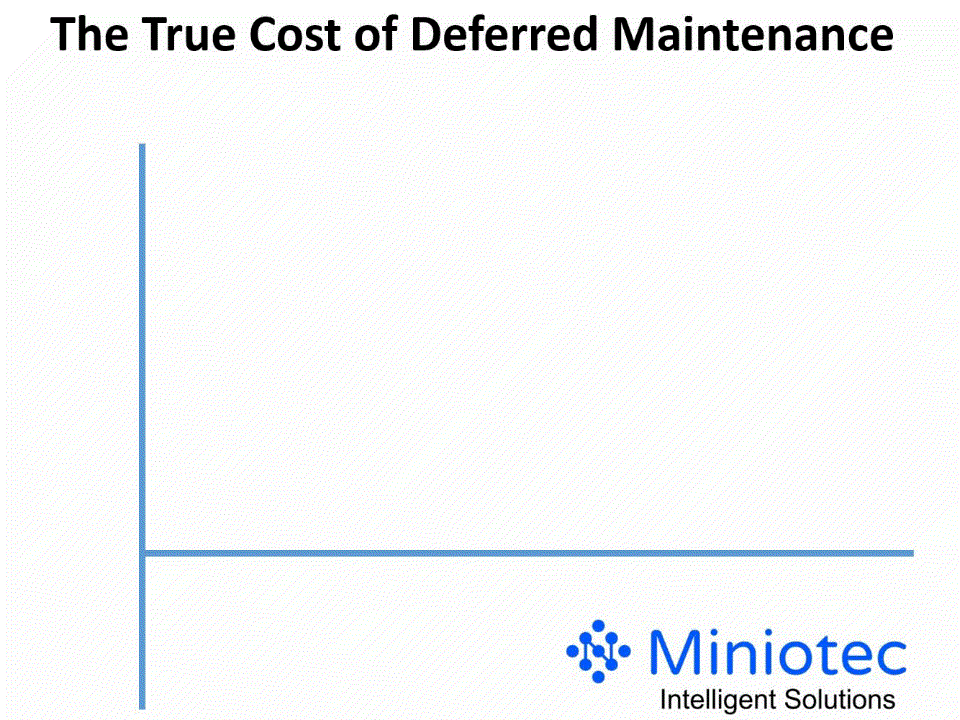Asset Criticality - Which Equipment is Most Suited for IIoT Monitoring and Maintenance?
- Miniotec - Intelligent Solutions

- Dec 5, 2022
- 3 min read
Updated: Mar 7, 2024
How Asset Criticality Drives Asset Maintenance Decision Making

In today’s digital world, asset criticality strategies are essential to the success of any asset management program. As organisations look to improve operational performance, they must leverage the latest technology and tools to ensure their people, processes and assets are as efficient as possible. A key way to do this includes adopting Industrial Internet of Things (IIoT) solutions within their Digital Transformation strategies.
In the last 12 months, Miniotec have undertaken a number of digital workshops and held a number of digital presentations where a common question asked is “Which equipment is most suited for IIoT monitoring and maintenance?”.
Although it seems like a reasonable question at first glance, the solution may not be the same for each organisation, making it difficult to handle a response holistically. The most effective method for determining which areas IIoT can support will typically involve performing a criticality assessment of all of your assets and allocating criticality ratings that evaluate each piece of equipment's vulnerability (likelihood of failure) versus criticality (consequence of failure).
Usually, the procedure includes:
Preparing a list of all your equipment
Establishing a Subject Matter Expert (SME) team from all key and relevant functions to form an assessment team
Systematically assigning a score to all of your equipment individually based on metrics that would consider downtime impacts on production, impacts on equipment performance etc.
Considerations on the business risk if an item fails, e.g. influences on compliance/regulatory etc.
Based on your considerations, providing a standardised conversion of the score to a risk rating.
Notwithstanding the above process, it is important to ‘normalise’ the scores to ensure there are no skew in outcomes that could make criticality too small or too broad.
From our experience, typical asset criticality splits across all equipment results in the following arrangement according to balancing the consequence of failures – 10:70:20.

Returning to the original question, the general consensus is that IIoT is most suited in monitoring equipment classified as having failure implications linked to "Serious" and "Marginal" categories, which generally accounts for around 70% of all machinery/equipment.
Read more about what the true cost of deferred maintenance is here.
By adopting IIoT solutions as part of your Digital transformation strategy, additional value is created for organisations by improving processes, reducing costs and increasing efficiency. Specifically, by adopting digital transformation within the Asset Management domain, organisations can gain better insight into their asset criticality strategies, which can lead to improved asset utilisation, increased uptime and better asset management.
We hope this article helps your operational improvement efforts.
How do you see IIoT supporting Digital Transformation? Let us know your thoughts?
Best;
Elevate your asset management and optimise your operations: take our online IIoT opportunity evaluation today for actionable insights.
About Miniotec:
Miniotec is a digital consulting and technology solutions provider, dedicated to supporting companies in their digital transformation journeys. Established by a group of experienced engineers, we emphasise the harmonious integration of people, processes and technology. Our team has a rich history of working across various sectors, from energy and resources to infrastructure and industry. We are trusted by the world's largest miners, oil and gas giants, utility companies and even budding start-ups and believe in the transformative power of the Industrial Internet of Things (IIoT) and its role in unlocking valuable data insights. Through IIoT, we aim to facilitate better decision-making, enhance operational activities and promote safer work environments. At Miniotec, our goal is to guide and support, ensuring every digital step is a step forward.
digital transformation
IIoT success
asset management
asset integrity
iot

.png)


